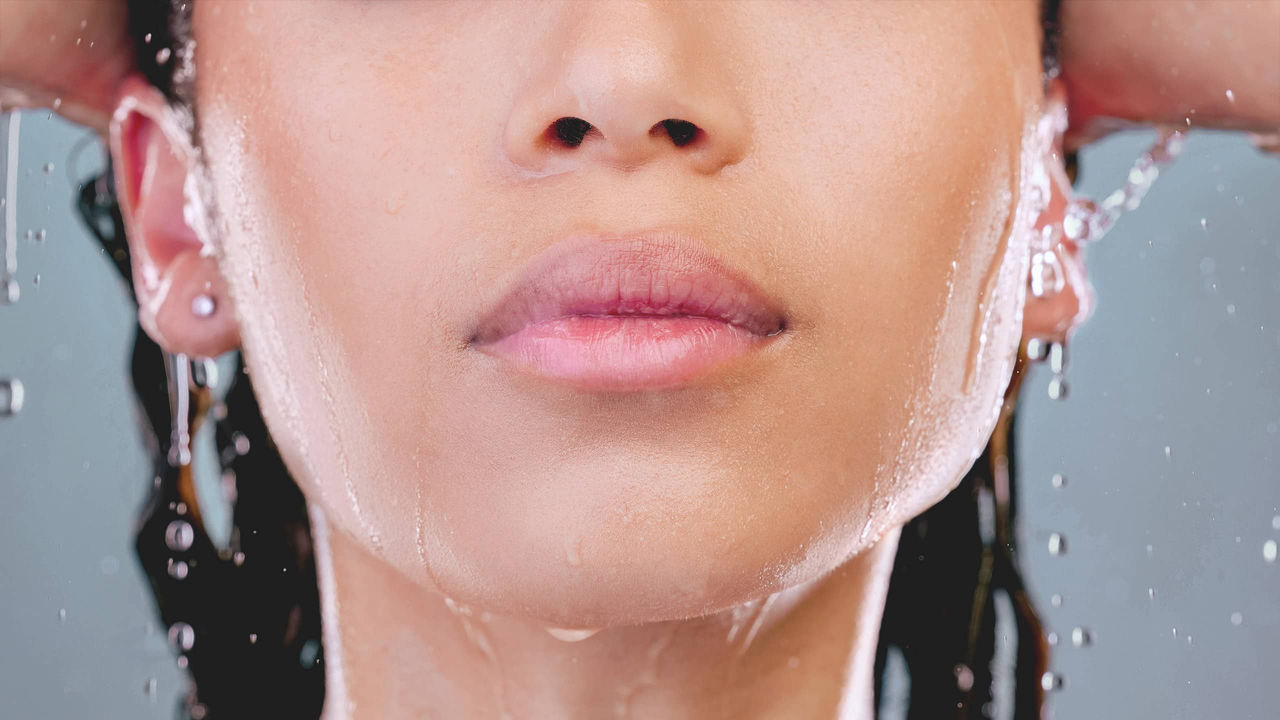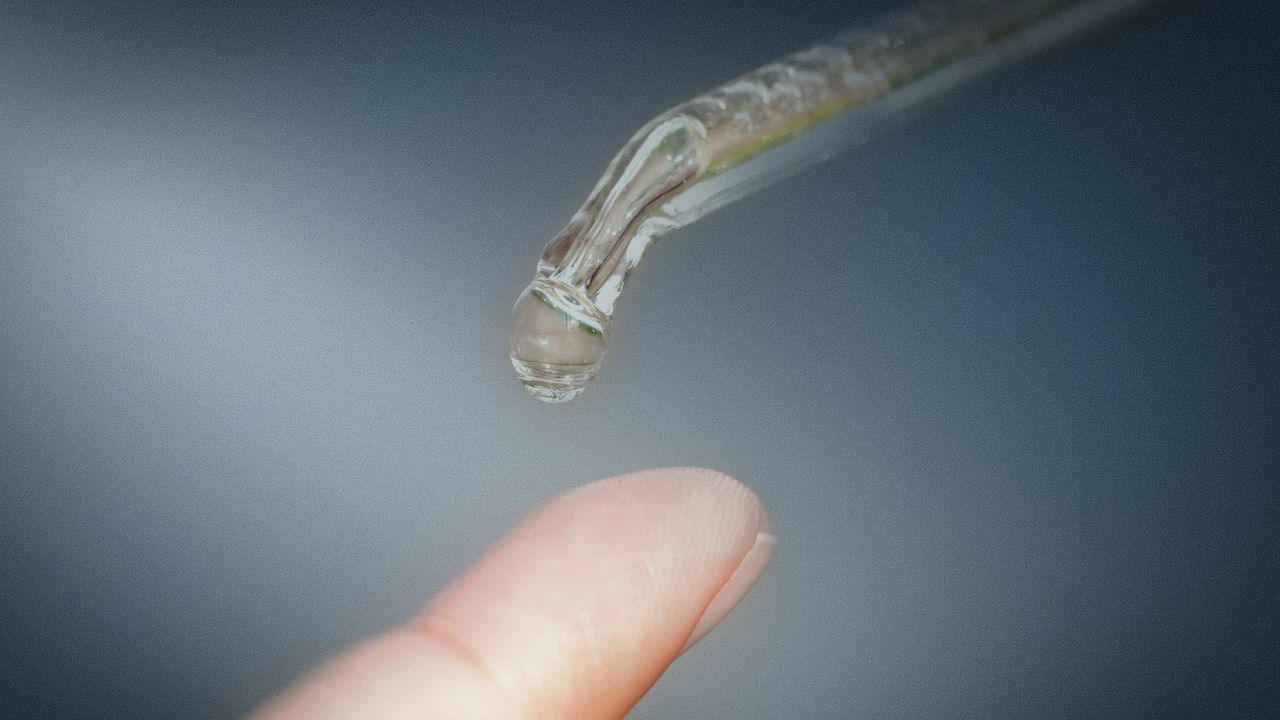SHARE
From the aesthetics clinic, to your at-home skincare routine, hyaluronic acid is everywhere. Often a key ingredient in topical skincare and injectable treatments, hyaluronic acid has lots of benefits and can be used to achieve a range of results, from restoring facial volume, to sculpting contours.
But how does it work? And why the recent boom in popularity? Let us talk you through the science behind hyaluronic acid, show you how it’s used by your aesthetics professional and help you feel informed and confident to make decisions about your skincare.
Inside hyaluronic acid - the ultimate hydrator
Hyaluronic acid isn’t just found in your skincare, it’s found naturally throughout your body. It is produced by your cells and found in your connective tissues, eyes and most importantly for us, in your skin. Hyaluronic acid has a superpower which sets it apart from other molecules — it’s a moisture magnet. Hyaluronic acid can attract and retain water up to 1,000 times its weight, the same weight ratio of an average human to a blue whale!
This superpowered sponge keeps water locked in. For our skin, that means a smooth, elastic texture that feels plump and well-hydrated.
But just like collagen and elastin, the other heroes of our skin, hyaluronic acid declines as we age. The rate of decline can be sped up by inflammation and sun exposure. When hyaluronic acid is low, the effects are similar to when the skin becomes very dry - signs of aging appear such as fine lines, volume loss and reduced elasticity.
This is where aesthetic medicine steps in, using lab-engineered hyaluronic acid to replenish and restore what time gradually diminishes.
Bringing hyaluronic acid into the aesthetics clinic
In the hands of your aesthetics professional, you’ll find hyaluronic acid is most often used in dermal fillers. This familiar injectable treatment is designed to restore lost volume, smooth fine lines and wrinkles and enhance facial contours, making it a popular anti-aging treatment.
Fillers are made from synthetic hyaluronic acid, designed to mimic your body’s own natural molecule. Replicating your natural hyaluronic acid closely matters — biocompatible fillers are less likely to cause reactions, are better tolerated, and provide a safer overall treatment.
Hyaluronic acid fillers are a great tool in the hands of an experienced aesthetics professional. They’re incredibly versatile and can be used in a range of skin areas including lips, cheeks and midface, nasolabial folds (the line from your nose to the corner of your mouth), beneath your eyes and around the jawline and chin. As you can imagine, hyaluronic acid fillers can deliver a range of results, from enhancing your natural pout and improving the appearance of dark circles, to sculpting a chiselled jawline. Whether you’re seeking a dramatic transformation or subtle enhancement of your natural features, the amount of filler used can be tailored to create your unique look.
What if you change your mind? One of the key benefits of fillers is that they aren’t permanent. Although you can usually enjoy long-lasting results from your filler treatment, should you need to reverse the effects, this can be achieved by using an enzyme that breaks down the hyaluronic acid.
But when there are so many fillers out there — what sets them apart from each other? To answer this, we need to understand filler technology.
Advanced hyaluronic acid filler technology
Hyaluronic acid based fillers have been around since the early 2000s but their technology is still evolving. There’s two main factors that set hyaluronic acid fillers apart from each other.
1. Cross-Linking
Hyaluronic acid produced by your body is in a constant cycle of being made and broken down. In aesthetics, because the hyaluronic acid is being synthesised, you can make it last longer. This process is called cross-linking. Quite simply, you create links between the hyaluronic acid molecules. Not only does this improve your fillers longevity when injected, but improves its stability so it keeps its shape in the skin.
With cross-linking, one size doesn’t fit all. So the amount of cross-linking is tailored to the fillers intended use — more cross-linking produces a firmer filler, less cross-linking results in a softer filler. Firmer fillers add more structure so can be well suited to enhance contours, such as sculpting the jawline. But a softer texture is better in lip fillers, to achieve the perfect pout.
Each filler manufacturer will use different cross-linking processes so consider discussing filler type with your aesthetics professional, so you can make an informed, confident decision.
2. Rheological Properties
Rheology is a big word for a simple idea — how something behaves under pressure. This is important for fillers because once injected, we need to know how they behave. For your aesthetics professional, rheology reveals how smoothly the filler can be injected and how well it adapts to your facial movements.
Here is another opportunity for your fillers to be customised. Rheology impacts the elasticity and viscosity of the filler — which tells us if it’s more like a liquid, or a solid. More solid fillers may be better to lift tissue and enhance contours, more liquid fillers better for subtle enhancements in dynamic areas with more movement.
Discover the power of hydration
If you’re considering a filler treatment, you’ve come to the right place. This minimally-invasive treatment can deliver a range of results, so discuss your skin goals and the risks and benefits of your treatment with your aesthetics professional.
With the Definisse™ range, we’ve taken the guesswork out of fillers. We understand the science of hyaluronic acid, so we know one filler cannot meet every aesthetic goal. With this in mind, we created the Definisse™ fillers range, optimised for natural beauty.
Composed of 3 distinct fillers, each can be used for a different look and feel so you don’t have to compromise. Discover all you’ve ever wanted with the full collection below.
● Definisse™ Core - Optimised to provide structure and enhance contours
● Definisse™ Restore - A versatile filler that excels in restoring volume
● Definisse™ Touch - Ideal for lips and nasolabial folds, to enhance volume and achieve natural-looking results
● Definisse™ Hydrobooster - Nourish and hydrate your skin with the ultimate moisturiser











